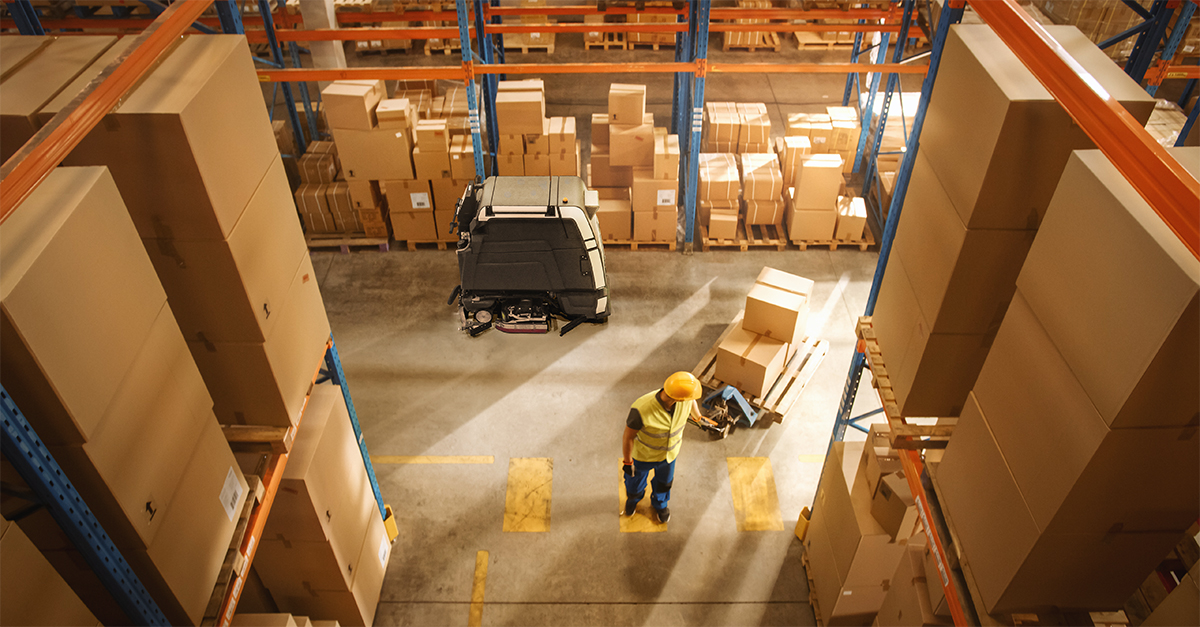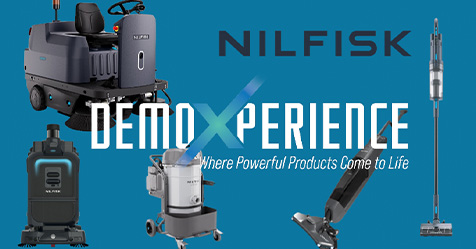Cleaning floors in industrial and commercial spaces, such as warehouses, airports, retail stores, hospitals, and schools, is a time-consuming task. Fortunately, the use of autonomous floor-scrubbing robots can make these tasks dramatically more efficient and cost-effective, thanks to significant product innovations in machine learning, engineering, and artificial intelligence (AI).
So why aren’t more facility managers and cleaning contractors taking advantage of these cost savings and efficiencies? The reason is twofold: Many companies don’t calculate the return on investment (ROI) for autonomous floor-scrubbing robots correctly, and they believe myths circulating about the equipment. However, these robots can be an indispensable part of any modern cleaning strategy once you dispel the following myths.
MYTH #1 All cleaning vehicles are the same
There are significant differences between autonomous mobile robots (AMRs) and autonomous guided vehicles (AGVs). An AMR considers the surrounding environment and accordingly plans a unique route each day. While cleaning, it can recognize dynamic changes in the area, such as foot or forklift traffic, and properly adapt. Software provides a report on the robot’s activity, including cleaning frequencies and spaces serviced.
An AGV also operates autonomously after being programmed, but it navigates along a pre-defined path. When obstacles or other dynamic changes in the environment arise, an AGV is limited in how it can respond. Often, it must stop until the obstacle is removed with human assistance.
MYTH #2 A robot is more expensive than hiring cleaning personnel
An accurate ROI for an autonomous floorscrubbing robot should factor in many considerations, including the financial savings of freeing up cleaning personnel and eliminating the need for manual cleaning equipment and its associated maintenance costs. In the four to six hours that a robot spends cleaning, personnel can do other value added tasks. This more efficient use of resources provides a significant savings in staff time.
For example, a staff member who cleans for one five-hour shift per day, five days a week, with an additional 20 minutes of set up time each day, will spend 1,386 hours cleaning annually if using a ride-on manual scrubber. In contrast, an autonomous scrubber would require only 20 minutes a day to set up, totaling 86 hours per year—a savings of 1,300 hours per year. At an hourly rate of US$28, that represents a direct labor savings of $36,400 dollars per year. Employers with constrained resources could deploy the time savings to a value-added activity, generating even greater returns.
When hiring cleaning staff, you need to add in the price of benefits, shift differential pay, on-the-job training, and accident liability, as well as the cost of absenteeism—none of which are issues for robots.
Consider that not only is an autonomous cleaning robot replacing labor hours, it also is replacing manual cleaning equipment and the equipment’s associated maintenance costs, which can be quite expensive.
When factoring in all the costs of manual cleaning (equipment, maintenance, labor, benefits, accidents)—many organizations might see a clear business case for choosing autonomous cleaning robots.
MYTH #3 Cleaning robots are difficult to use
The most advanced autonomous floor-scrubbing robots are designed with a simple, intuitive user interface and are no more difficult to use than a manual scrubber. They include on-robot training for operators and take the same amount of time to set up as its manual counterpart.
Many autonomous robots are capable of adapting to changing environments without much human input. As these robots can run without regular reprogramming, operators will not need training to program the unit. Good technical support can also reduce operator interventions and simplify any required training.
The ability to operate constantly, day and night, with minimal human intervention, not only simplifies cleaning scheduling and tasks, but can also greatly improve cleaning staff satisfaction by eliminating night-time cleaning shifts.
MYTH #4 Cleaning automation can’t attain the same level of cleanliness as humans
Thanks to continuous cleaning, today’s autonomous floor-scrubbing robots can and do exceed the level of cleanliness achieved by human personnel. Some of the features that ensure robots can clean for long, uninterrupted periods include:
- Designs that reduce the risk of clogs in the vacuum hose and tank
- Sophisticated navigation capabilities that allow the robots to clean in the most dynamic and challenging environments
- Advanced obstacle detection capabilities that use machine learning to identify and avoid objects and people.
Continuous cleaning—along with up-to-the-minute, accurate reporting—help robots achieve a superior level of cleaning outcomes.
MYTH #5 A robot can only run in a predefined space
It is true that an operator must teach some cleaning robots to follow a specified path or clean in a predefined pattern. However, the most advanced autonomous cleaning robots do not require any such teaching and make driving decisions on their own, using sophisticated navigation AI.
MYTH #6 Cleaning robots are less productive than human workers
The cleaning industry has long measured productivity in terms of square footage cleaned per hour. Therefore, some facility managers want to know the productivity in square feet/hour for the autonomous cleaning robot so they can compare it to that of their ride-on scrubber. However, this type of comparison misses the point that the facility will no longer be paying someone to ride the robot.
Instead, ask your autonomous cleaning robot vendor to walk you through the business case for moving to autonomous cleaning based on the specific needs of your facility.
MYTH #7 Autonomous cleaning isn’t environmentally friendly
Autonomous floor-scrubbing robots use precision reporting to optimize the usage of water and other consumables. The robots are battery-powered, a clean form of energy usage compared to the manual cleaning equipment they are replacing, which is often powered by diesel or propane. Plus, when it is time to replace the equipment, the robots themselves are recyclable.



